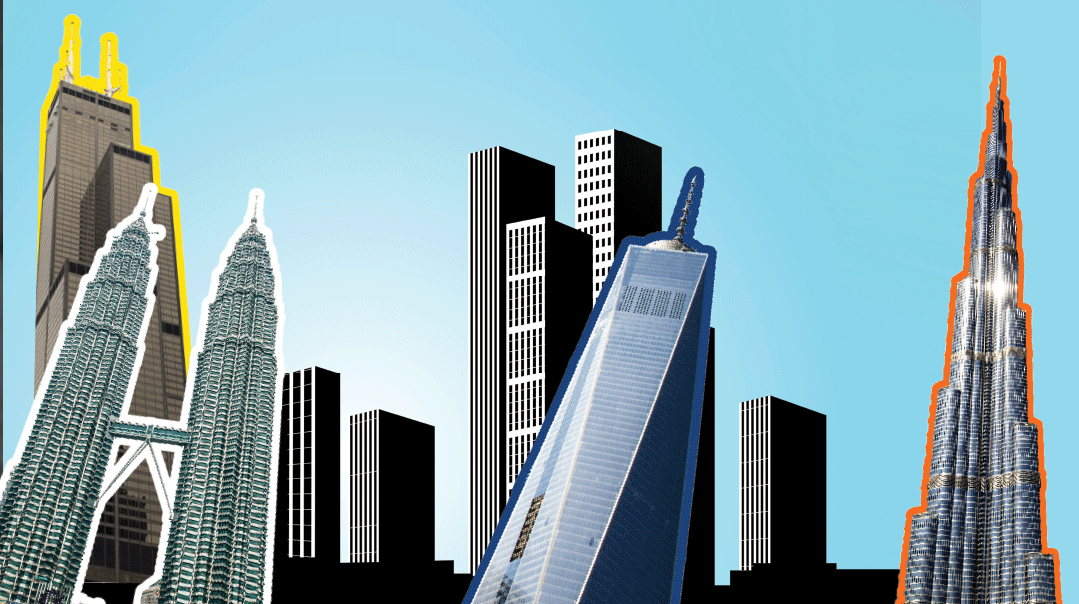Race to the Top

Where is the tallest skyscraper in the world? Tiny, little Dubai beats them all! How did that happen?
Why Dubai?
The Burj Khalifa in Dubai has 200 floors and is 2,484 feet high. It’s currently the tallest building in the world. It surpassed previous record holders, such as One World Trade Center in New York, the Willis Tower in Chicago, and the Petronas Twin Towers in Kuala Lumpur, Malaysia.
How did Dubai, a Persian Gulf state 1/118th the size of the US, with a population of about 3.3 million, get to be the skyscraper king of the world?
The answer is, in a word, oil. Like other Arab countries in the region, Dubai got rich by digging oil out of the ground and selling it to other countries. But with oil deposits running out in a few years, they decided to diversify before it was too late. So they took billions in profits from oil and put it back in the ground — or rather, on top of it — in the form of very tall buildings. The idea was that these buildings would dazzle the world, and bring in tourism and other business to make up for the dwindling oil. Oil and gas used to be half of the economy of Dubai. Today, it’s less than 1 percent.
Burj Khalifa isn’t the only big building in Dubai. Dubai has 190 skyscrapers. Only New York and Hong Kong have more than that.
And Burj Khalifa will soon be overtaken by Saudi Arabia’s Jeddah Tower. That one is aiming at 3,280 feet, over half a mile in the air!
Which raises the question: How high can they go? According to skyscraper architect William Baker, “We could easily do a mile. We could do at least a mile and probably quite a bit more.” That’s based on current building technology.
Actually, some people think it could go higher. There are blueprints drawn up for a building called X-Seed 4000, which would be 2.4 miles high! That’s about the height of the famous Mount Fuji in Japan. Some experts think you could build one taller than Mount Everest!
So why don’t we build such tall buildings? There are many reasons.
To begin with, the higher you build, the bigger the base needed to support it. The base of X-Seed 4000 would have to be 3.7 miles across. When you think about it, it’s like building a mountain; wide at the bottom, narrowing at the top. (And like mountains, such ultrahigh structures would also interfere with weather patterns.)
Therefore, you need a lot of land to build on, and land costs money. The land, combined with workers’ wages, and a mountain of glass, steel, and concrete would put a price tag of about $1.4 trillion on the X-Seed 4000.
(Excerpted from Mishpacha Jr., Issue 802)
Oops! We could not locate your form.







